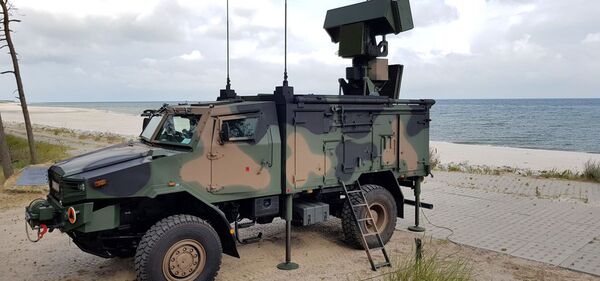
Bystra, fitted on an AMZ Kutno Żubr-P armoured vehicle, is a redeployable radar developed by PIT-RADWAR that is capable of detecting aerial threats, such as helicopters, missiles, and unmanned aerial vehicles for V/SHORAD systems. (PIT-RADWAR)
The Polish Armament Agency has signed a PLN1.1 billion (USD255.4 million) agreement with the PGZ-Pilica+ consortium for the Bystra radar, the authority announced on 29 March.
In total, 22 Bystra radars, developed by PIT-RADWAR under the PGZ-Pilica+ consortium, will be delivered between 2026 and 2028, and are intended for the Pilica+ anti-aircraft missile and artillery system (PSR-A).
This is the second contract placed by the Polish Ministry of National Defence for the company's radars, with an initial PLN634.9 million deal signed in September 2019 for 16 Bystra systems. Deliveries are expected to complete by 2025.
Bystra is a small redeployable radar designed to detect and localise aerial threats at short ranges. It can be used in very-short-range and short-range air-defence (V/SHORAD) systems and has a maximum range of 80 km.
Pilica is a VSHORAD system, which is being upgraded by the PGZ-Pilica+ consortium to the Pilica+ standard for the Polish Armed Forces, following an agreement signed between the Polish and UK ministries of defence in October 2022. This involves modifying six PSR-A systems to the “+” standard and supplying 15 new platforms based on the newest configuration, known as PSR-A Pilica+.
Looking to read the full article?
Gain unlimited access to Janes news and more...
